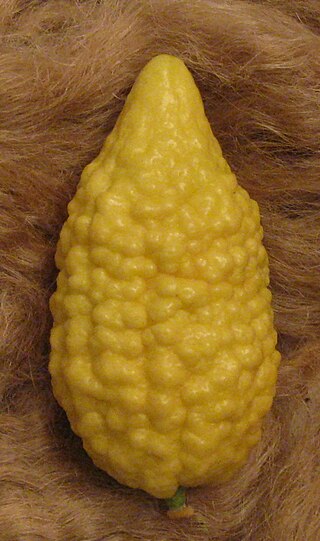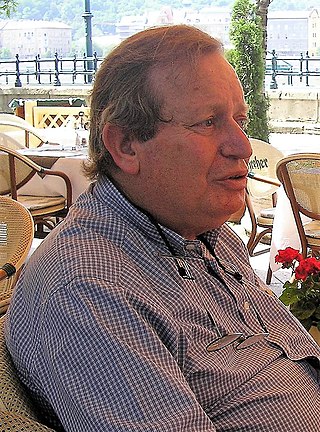Numbers
The Hebrew language has names for common numbers that range from zero to one million. Letters of the Hebrew alphabet are used to represent numbers in a few traditional contexts, such as in calendars. In other situations, numerals from the Hindu–Arabic numeral system are used. Cardinal and ordinal numbers must agree in gender with the noun they are describing. If there is no such noun (e.g., in telephone numbers), the feminine form is used. For ordinal numbers greater than ten, the cardinal is used. Multiples of ten above the value 20 have no gender (20, 30, 40, ... are genderless), unless the number has the digit 1 in the tens position (110, 210, 310, ...).


Ordinal values
| Ordinal (English) | Ordinal (Hebrew) | |
|---|---|---|
| Masculine | Feminine | |
| First | (rishon) רִאשׁוֹן | (rishona) רִאשׁוֹנָה |
| Second | (sheni) שֵׁנִי | (shniya) שְׁנִיָּה |
| Third | (shlishi) שְׁלִישִׁי | (shlishit) שְׁלִישִׁית |
| Fourth | (revi'i) רְבִיעִי | (revi'it) רְבִיעִית |
| Fifth | (chamishi) חֲמִישִׁי | (chamishit) חֲמִישִׁית |
| Sixth | (shishi) שִׁשִּׁי | (shishit) שִׁשִּׁית |
| Seventh | (shvi'i) שְׁבִיעִי | (shvi'it) שְׁבִיעִית |
| Eighth | (shmini) שְׁמִינִי | (shminit) שְׁמִינִית |
| Ninth | (tshi'i) תְּשִׁיעִי | (tshi'it) תְּשִׁיעִית |
| Tenth | ('asiri) עֲשִׂירִי | ('asirit) עֲשִׂירִית |
Note: For ordinal numbers greater than 10, cardinal numbers are used instead.
Cardinal values
| Hindu-Arabic numerals | Hebrew numerals | Cardinal (ex. one, two, three) | |
|---|---|---|---|
| Masculine | Feminine | ||
| 0 | ('efes) אֶפֶס | ||
| 1 | א (alef) | ('eḥad) אֶחָד | ('aḥat) אַחַת |
| 2 | ב (bet) | (shənayim) שְׁנַיִם | (shətayim) שְׁתַּיִם |
| 3 | ג (gimel) | (shəlosha) שְׁלֹשָׁה | (shalosh) שָׁלֹשׁ |
| 4 | ד (dalet) | ('arba'a) אַרְבָּעָה | ('arba') אַרְבַּע |
| 5 | ה (he) | (ḥamisha) חֲמִשָּׁה | (ḥamesh) חָמֵשׁ |
| 6 | ו (vav) | (shisha) שִׁשָּׁה | (shesh) שֵׁשׁ |
| 7 | ז (zayin) | (shiv'a) שִׁבְעָה | (sheva') שֶׁבַע |
| 8 | ח (ḥet) | (shəmona) שְׁמוֹנָה | (shəmone) שְׁמוֹנֶה |
| 9 | ט (tet) | (tish'a) תִּשְׁעָה | (tesha') תֵּשַׁע |
| 10 | י (yod) | ('asara) עֲשָׂרָה | ('eser) עֶשֶׂר |
| 11 | יא | (aḥad-'asar) אֲחַד-עָשָׂר | (aḥat-'esəreh) אֲחַת-עֶשְׂרֵה |
| 12 | יב | (shəneim-'asar) שְׁנֵים-עָשָׂר | (shəteim-'esre) שְׁתֵּים-עֶשְׂרֵה |
| 13 | יג | (shəloshaf-'asar) שְׁלֹשָה-עָשָׂר | (shəlosh-'esre) שְׁלֹשׁ-עֶשְׂרֵה |
| 14 | יד | ('arba'a-'asar) אַרְבָּעָה-עָשָׂר | ('arba'-'esre) אַרְבַּע-עֶשְׂרֵה |
| 15 | ט״ו or י״ה | (ḥamisha-'asar) חֲמִשָּׁה-עָשָׂר | (ḥamesh-'esre) חֲמֵשׁ-עֶשְׂרֵה |
| 16 | ט״ז or י״ו | (shisha-'asar) שִׁשָּׁה-עָשָׂר | (shesh-'esre) שֵׁש-עֶשְׂרֵה |
| 17 | יז | (shiv'a-'asar) שִׁבְעָה-עָשָׂר | (shəva'-'esre) שְׁבַע-עֶשְׂרֵה |
| 18 | יח | (shəmona-'asar) שְׁמוֹנָה-עָשָׂר | (shəmone-'esre) שְמוֹנֶה-עֶשְׂרֵה |
| 19 | יט | (tish'a-'asar) תִּשְׁעָה-עָשָׂר | (təsha'-'esre) תְּשַׁע-עֶשְׂרֵה |
| 20 | כ or ך (kaf) | ('esrim) עֶשְׂרִים | |
| 30 | ל (lamed) | (shəloshim) שְׁלֹשִׁים | |
| 40 | מ or ם (mem) | ('arba'im) אַרְבָּעִים | |
| 50 | נ or ן (nun) | (ḥamishim) חֲמִשִּׁים | |
| 60 | ס (samekh) | (shishim) שִׁשִּׁים | |
| 70 | ע ('ayin) | (shiv'im) שִׁבְעִים | |
| 80 | פ or ף (pe) | (shəmonim) שְׁמוֹנִים | |
| 90 | צ or ץ (tsadi) | (tish'im) תִּשְׁעִים | |
| 100 | ק (qof) | (me'a) מֵאָה | |
| 200 | ר (resh) | (ma'tayim) מָאתַיִם | |
| 300 | ש (shin) | (shəlosh me'ot) שְׁלֹשׁ מֵאוֹת | |
| 400 | ת (tav) | ('arba' me'ot) אַרְבַּע מֵאוֹת | |
| 500 | ך | (ḥamesh me'ot) חֲמֵשׁ מֵאוֹת | |
| 600 | ם | (shesh me'ot) שֵׁשׁ מֵאוֹת | |
| 700 | ן | (shəva me'ot) שְׁבַע מֵאוֹת | |
| 800 | ף | (shəmone me'ot) שְׁמוֹנֶה מֵאוֹת | |
| 900 | ץ | (təsha' me'ot) תְּשַׁע מֵאוֹת | |
| 1000 | א' | ('elef) אֶלֶף | |
| 2000 | ב׳ | ('alpayim) אַלְפַּיִם | |
| 5000 | ה' | (ḥameshet alafim) חֲמֵשֶׁת אֲלָפִים | |
| 10 000 | י' | ('aseret 'alafim) עֲשֶׂרֶת אֲלָפִים or (rəvava) רְבָבָה or (ribbo) רִבּוֹא | |
| 100 000 | ק' | (me'a 'elef) מֵאָה אֶלֶף or (aseret ribbo') עֲשֶׂרֶת רִבּוֹא | |
| 1 000 000 | | (milyon) מִילְיוֹן or (me'a ribbo') מֵאָה רִבּוֹא | |
| 10 000 000 | | ('asara milyon) עֲשָׂרָה מִילְיוֹן or ('elef ribbo') אֶלֶף רִבּוֹא | |
| 100 000 000 | | (me'a milyon) מֵאָה מִילְיוֹן or (ribbo' ribbo'ot) רִבּוֹא רִבּוֹאוֹת or (ribbo' revavot) רִבּוֹא רְבָבוֹת | |
| 1 000 000 000 | | (milyard) מִילְיַרְדּ | |
| 1 000 000 000 000 | | (trilyon) טְרִילְיוֹן | |
| 1015 | | (kəvadrilyon) קְוַדְרִילְיוֹן | |
| 1018 | | (kəvintilyon) קְוִינְטִילְיוֹן | |
Note: Officially, numbers greater than a million were represented by the long scale. However, since January 21, 2013, the modified short scale (under which the long scale milliard is substituted for the strict short scale billion), which was already the colloquial standard, became official. [4]
Collective numerals
| Number | We masc. | We fem. | You masc. | You fem. | They masc. | They fem. |
|---|---|---|---|---|---|---|
| Two together | (shənenu) שְׁנֵינוּ | (shətenu) שְׁתֵּינוּ | (shənechem) שְׁנֵיכֶם | (shətechen) שְׁתֵּיכֶן | (shənehem) שְׁנֵיהֶם | (shətehen) שְׁתֵּיהֶן |
| Three together | (shəloshtenu) שְׁלָשְׁתֵּנוּ | (shəloshtəchem) שְׁלָשְׁתְּכֶם | (shəloshtəchen) שְׁלָשְׁתְּכֶן | (shəloshtam) שְׁלָשְׁתָּם | (shəloshtan) שְׁלָשְׁתָּן | |
| Four together | ('arba'tenu) אַרבַּעְתֵּנוּ | (arba'təchem) אַרבַּעְתְּכֶם | ('arba'təchen) אַרבַּעְתְּכֶן | ('arba'tam) אַרבַּעְתָּם | ('arba'tan) אַרבַּעְתָּן | |
| Five together | (chamishtenu) חֲמִשְׁתֵּנוּ | (chamisht'chem) חֲמִשְׁתְּכֶם | (chamisht'chen) חֲמִשְׁתְּכֶן | (chamishtam) חֲמִשְׁתָּם | (chamishtan) חֲמִשְׁתָּן | |
| Six together | (shishtenu) שִׁשְׁתֵּנוּ | (shisht'chem) שִׁשְׁתְּכֶם | (shisht'chen) שִׁשְׁתְּכֶן | (shishtam) שִׁשְׁתָּם | (shishtan) שִׁשְׁתָּן | |
| Seven together | (shva'tenu) שְׁבַעְתֵּנוּ | (shva'tchem) שְׁבַעְתְּכֶם | (shva'tchen) שְׁבַעְתְּכֶן | (shva'tam) שְׁבַעְתָּם | (shva'tan) שְׁבַעְתָּן | |
| Eight together | (shmonatenu) שְׁמוֹנָתֵנוּ | (shmonatchem) שְׁמוֹנָתְכֶם | (shmonatchen) שְׁמוֹנָתְכֶן | (shmonatam) שְׁמוֹנָתָם | (shmonatan) שְׁמוֹנָתָן | |
| Nine together | (tsha'tenu) תְּשַׁעְתֵּנוּ | (tsha'tchem) תְּשַׁעְתְּכֶם | (tsha'tchen) תְּשַׁעְתְּכֶן | (tsha'tam) תְּשַׁעְתָּם | (tsha'tan) תְּשַׁעְתָּן | |
| Ten together | (asartenu) עֲשַׂרתֵּנוּ | (asart'chem) עֲשַׂרתְּכֶם | (asart'chen) עֲשַׂרתְּכֶן | (asartam) עֲשַׂרתָּם | (asartan) עֲשַׂרתָּן | |
Speaking and writing
Cardinal and ordinal numbers must agree in gender (masculine or feminine; mixed groups are treated as masculine) with the noun they are describing. If there is no such noun (e.g. a telephone number or a house number in a street address), the feminine form is used. Ordinal numbers must also agree in number and definite status like other adjectives. The cardinal number precedes the noun (e.g., shlosha yeladim), except for the number one which succeeds it (e.g., yeled echad). The number two is special: shnayim (m.) and shtayim (f.) become shney (m.) and shtey (f.) when followed by the noun they count. For ordinal numbers (numbers indicating position) greater than ten the cardinal is used.
![A tombstone from 1935 in Baiersdorf, Germany, reading:
nptr byvm k Ayyr
vnqbr byvm kg Ayyr
SHnt trTSh lpq
In English:
Passed away on day 20 Iyar
And buried on day 23 Iyar
Year 695 without the thousands [i.e. year 5695]
Note the dots above each letter in each number. Baiersdorf Juedischer Friedhof 025 (cropped).JPG](http://upload.wikimedia.org/wikipedia/commons/thumb/4/4c/Baiersdorf_Juedischer_Friedhof_025_%28cropped%29.JPG/170px-Baiersdorf_Juedischer_Friedhof_025_%28cropped%29.JPG)





